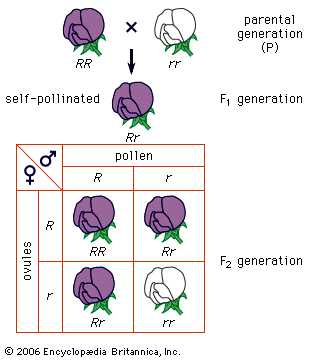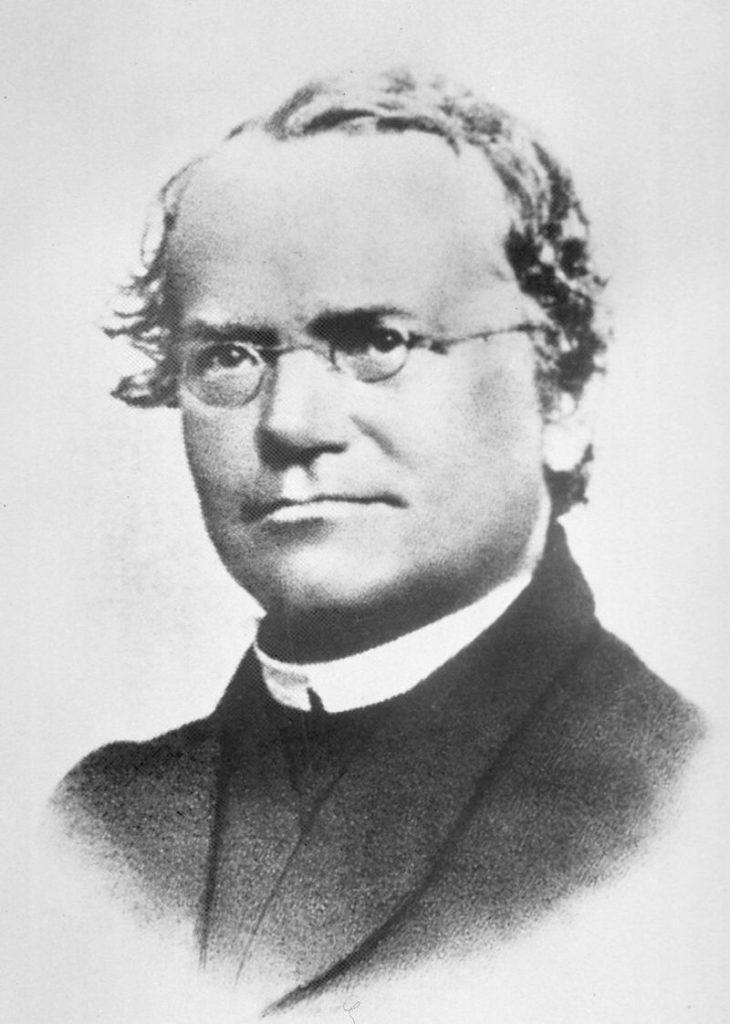The laws of inheritance are a set of fundamental principles that govern the transmission of genetic traits from one generation to the next. Its discovery and understanding have changed our view of life while having a profound impact on a diverse range of topics such as medicine, agriculture and biotechnology. The ideas behind the laws of inheritance, the theory of evolution by natural selection, and population genetics has formed what scientist’s call the modern synthesis, a cornerstone of modern biology.
Gregor Mendel and the Pea Plant Experiments
For most of history peoples understanding about inheritance came from anecdotal evidence and observations of certain traits being passed down from parents to offspring. It wasn’t until the mid 19th century that the Augustinian monk Gregor Mendel conducted his now famous experiments with pea plants that established the principles of heredity. Prior to Mendel’s experiments the prevailing theory of inheritance suggested a blending of traits and characteristics from both parents to their offspring.

(Credit: Encycleopedia Britannica)
In 1866 the Augustinian monk Gregor Mendel published Experiments in Plant Hybridization that explained his pea plant experiments and the resulting laws of inheritance. His work was first read to the Natural History Society of Brünn then published in the Proceedings of the Natural History Society of Brünn.
During the years 1856 to 1863 Mendel cultivated over 28,000 plants and tested for seven specific traits The traits he tested for were:
- Pea shape (round or wrinkled)
- Pea color (green or yellow)
- Pod shape (constricted or inflated)
- Pod color (green or yellow)
- Flower color (purple or white)
- Plant size (tall or dwarf)
- Position of flowers (axial or terminal)
The results of his careful experimentation allowed Mendel to formulate some general laws of inheritance. His three laws of inheritance are:
- Law of Segregation – allele pairs (one form of a gene) segregate during gamete (sex cells: sperm or egg) formation. Stated differently: each organism inherits at least two alleles for each trait but only one of these alleles are randomly inherited when the gametes are produced.
- Law of Independent Assortment – allele pairs separate independently during the formation of gametes.
- Law of Dominance – when two alleles of a pair are different, one will be dominate while the other will be recessive.
Mendel’s laws of inheritance suggested a particulate inheritance of traits in which traits are passed from one generation to the next in discrete packets. As already noted, this differed from the most popular theory at the time which suggested a blending of characteristics in which traits are blended from one generation to the next.
Unfortunately for the progress of science, Mendel’s work was largely unnoticed and forgotten during his lifetime. This was for a few reasons. First, he lived in relative isolation at the Augustinian St. Thomas’s Abbey, now the modern day Czech Republic, and did not have a network of scientific colleagues. He published his work in relatively obscure scientific journal and did not have the means to promote his findings. His work, in a sense, was also ahead of his time. The scientific community was simply focused on other areas of study during his lifetime and the concept of discrete hereditary units (now called genes) did not fit in with the prevailing scientific paradigm. Lastly Mendel did little follow up to his work and soon shifted his attention to administrative and educational duties within the abbey. It wasn’t until the turn of the 20th century that his work was rediscovered and popularized independently by three scientists – Hugo de Vries, Carl Correns, and Erich von Tschermak.
A Journey into Genetics
Mendel’s laws of inheritance laid the groundwork for the 20th century field of genetics. The field of genetics is the study of heredity that incorporates the structure and function of genes as the mechanism of biological inheritance.
The emergence of molecular genetics began to take shape after it was discovered that the mechanism of hereditary transfer was contained in nucleic acids. The race was on to discover the mechanism by which nucleic acids transferred the hereditary material. The final breakthrough culminated with the discovery of the double-helical structure of DNA by James Watson and Francis Crick in 1953, as it provided the definitive explanation for how genetic information is encoded and transmitted within living organisms.
The field of genetics continues to advance into the 21st century at a blistering pace. In addition to unraveling the fundamental principles of life, scientists are now able to exploit the mechanics of genes and are learning novel ways to edit them to cure disease. As of late 2023, the United States Food and Drug Administration (FDA) and medical regulators in the United Kingdom have approved the world’s first gene-editing treatment for Sickle Cell Disease using a gene-editing tool called Crispr. Crispr technology has the potential to revolutionize the field of genetics and various related fields through its precise genome editing capabilities, potentially leading to another exciting development in the exciting history of science!
Continue reading more about the exciting history of science!
